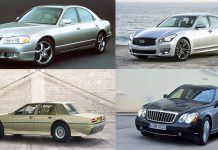The Society of Indian Automobile Manufacturers (SIAM) recently published sales data on the bike sales in January 2017. According to the data, the Royal Enfield Classic 350 sold around 3,000 units more than the Bajaj Pulsar, overtaking the brand for the first time. The Classic 350 recorded 39,391 units sold in the month, while the Pulsar clocked 36,456 sales. This is a significant upset, with Royal Enfield gaining the upper hand over one of its biggest competitors in the Indian market at present. The heritage bike maker registered a sales growth of nearly 44 percent in the month.
The Royal Enfield Classic 350’s success over the Bajaj Pulsar brand gives some insight on how the current Indian bike market is placed. Royal Enfield works under a largely isolated market segment beyond the price-sensitive commuter segment, appealing to a target audience that is not as impacted by demonetization as other classes. The Royal Enfield Classic 350, in particular, is its best-selling model thanks in large part to its positioning. The Classic 350 is offered as an aspirational product that can also serve as an everyday bike. The price point of the bike has also been set to make it accessible to a wide audience. These factors have helped the Classic 350 grow in sales.
The Bajaj Pulsar brand, however, has a few products in its range that are part of the common commuter segment. It also appeals to a rural customer base. Both of these were significantly affected by recent economic conditions, including demonetisation. Nevertheless, the commuter segment continues to reign supreme in the volume game. The Hero Splendour was the top seller in January with 2.08 lakh units sold by Hero Motorcorp. Meanwhile, the Hero HF Deluxe, another commuter ranked second at 1.07 lakh units sold, and it recorded the highest growth rate. The Honda CB Shine sold 70,294 units and the Hero Passion sold 56,335 units. Bajaj Pulsar saw sales decline from 46,314 units in January 2016.
Abdul Majeed, Partner, PwC, said, “It is tough time for mass motorcycle manufacturers because at one end the demand is badly impacted because of demonetization and at another end the supply is affected due to upcoming emission norms making it tight for the mass two wheeler manufacturers.”



















